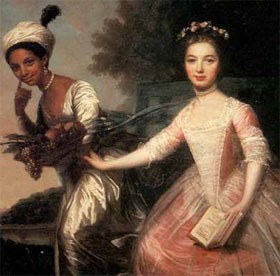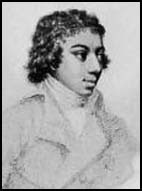In light of the pop cultural phenomenon of Netflix’s Bridgerton series and its multicultural alternative reality take on the books, Kristine has graciously allowed me to revisit and update this article, originally published in 2011.
I once had a dream, as I devoured Regency romance after Regency romance in my college years. Or more accurately a question. Could I write a Regency with a heroine who was Black? It was born perhaps from being a child of the ‘70’s who remembered the momentous day she first saw a Black actor in a toothpaste ad, as though Madison Avenue had finally realized we used such products too. And also, perhaps, because of a seed planted by a college history class that spoke of Lord Dunmore’s promise to take slaves who fought the British back to England in victory, but never knowing whatever came of it.
The research began telling its own stories. Of Queen Elizabeth I’s unenforceable decree to remove “blackamoors” from England to ease the burden of the poor on the country. Of Black courtiers taken from Portuguese vessels in King James IV Scottish court, including the Black Lady of the Tournament of the Black Knight and Lady. How Lord Dunmore’s promise indeed landed many Black soldiers, not unlike other soldiers without family returning from war, into London’s poorer streets. Of African princes educated at university, of Ignatius Sancho, a shopkeeper who left behind his own unique vision of England’s middling class. Of the blurring of free Black and slave within England itself, highlighted by the tales of Mary Hylas, stolen from her husband because her former masters changed their minds about her freedom, and the famous Somerset Case, a cornerstone in the fight to abolish slavery, presided over by James Murray, Lord Mansfield and Chief Justice. Of Lord Mansfield’s own unique brush with race within his household. Of a queen whose reflection buoyed a cause and spoke to how intertwined we all truly are.
So began an eternal obsession with all things Black in Britain (and in other parts of Europe for that matter). I claim not so much to be an expert as an enthusiast, but like all enthusiasts I can’t help but to talk a bit about a favored subject, one to underscore why I like keeping the idea of Black History Month, and not trying to relegate it to African-American History Month or dismiss it altogether, because there’s so much more to the story than ever happened on American shores.
Many books have been written on the history, the social mores: a fascinating blend of class and race that resembled more 20th-century America’s struggles than the oversimplified, misapplied stereotype of a pre- and post-antebellum South. Far more than one could squeeze into a single blog. So I’ll spotlight some notable men and women, focusing on the Georgian and Victorian eras. A list of books follows for those who may want to indulge their own curiosity further.
Kidnapped from what is now Nigeria and sold into slavery in childhood, he was a slave to a Royal Navy captain and a Quaker merchant before earning the price of his own freedom. He then traveled the world, including in an aborted attempt to reach the North Pole. Coming to London, he became involved in the abolitionist movement which led to his writing and publishing his famous autobiography, The Interesting Narrative of the Life of Olaudah Equiano, or Gustavus Vassa the African (1789), considered to be the first known English account by an African on his native country.
Her Majesty was not Black in the sense of self-identity, or of one being born of direct or closely mixed heritage. Her ancestry is still debated. Commonly her ancestor, Margarita de Castro e Sousa of Portugal, is identified as the reason for Queen Charlotte’s appearance. Multiple family lines can be traced between the queen and Margarita, who was of Moorish or Mozarabic descent, with the idea that extensive inbreeding among noble houses led to Charlotte’s unexpected appearance. Both of those ethnic religious groups include Berbers, who are native to a broad area of North and West Africa. As for the term “Moor,” by the 1500s, it was used to mean Muslims or anyone with dark skin, though sometimes “blackamoor” and “White Moor” were used to distinguish between the two.
What is documented is that the queen’s “negroid” or “mulatto” features were remarked upon by her contemporaries — including her personal physician — and likely used as a symbol by some in the anti-slavery movement. Sir Allan Ramsay, an abolitionist himself, was the artist responsible for the majority of her portraits and his representations of her were the most decidedly African. He also married the niece of Lord Mansfield and was therefore related by marriage to Dido Elizabeth Belle.
The queen was a patron of the arts, supporting Bach and Mozart, and an avid amateur botanist, taking great interest in expanding what became Kew Gardens.
In 1772, William Murray, 1st Earl of Mansfield and Chief Justice, ruled in the Somerset case that slavery in England had “no binding in law.” It did not abolish slavery in England but made it illegal to remove a slave from England against that person’s will. No record exists of what Dido thought of her great-uncle’s landmark slave case. But surely some of the ramifications crossed her mind as she went about tending the chickens and what other genteel chores were hers in Kenwood, his country estate.
She was born of a West Indian slave, Maria Bell, later spelled “Belle,” and Captain Sir John Lindsay of the Royal Navy, Mansfield’s nephew. Her very existence in Mansfield’s home became a prism of attitudes of the day. Some merely noted her presence. American visitors remarked in surprise when she joined the family after dinner. Scholars have argued whether she was tolerated or beloved family. It was ironic that her great-uncle felt the need to reiterate her status as a free woman in his will, in which he also left her £500 plus £100 per year. This in addition to the £1000 her father had left her in his will.
In 1793, she married John Davinier, a steward, or senior servant, likely of a friend of the Murray household.
Born in east Poland, Bridgetower debuted in Pairs at the age of nine, playing a violin concerto by Giornovichi. Soon after he was taken to England by his father and performed in concert. However, many in Society felt the senior Bridgetower mistreated his son, and in 1791, the Prince of Wales (later George IV) paid the father to leave the country. From that point, Bridgetower was under royal protection. For 14 years he was first violinist in the prince’s private band. He became friends with Ludwig van Beethoven in 1803 while on concert tour in Austria. He accompanied Beethoven in the first public performance of Violin Sonata no. 9, later known as the Kreutzer Sonata, having never seen the piece before. It was originally dedicated to Bridgetower — the Sonata Mulattica — but the dedication was changed after the two quarreled. He was elected to the Royal Society of Musicians in 1807 and would later perform with the London Philharmonic Orchestra.
The first American to fight for the London Prize Ring championship, Molineux was a slave who was reportedly given his freedom after winning a match on which his owner had placed a large bet. He sailed to England in 1809 to become a professional prize fighter. In London, he met another Black American, Bill Richmond, a former boxer who became his trainer. He fought his way up the ranks, eventually meeting the British champion, Tom Cribb, on December 18, 1810. He seemed to be winning handily, and in the 23rd round he apparently knocked out Cribb. However, Cribb’s corner claimed he had been fouled, and the long argument that ensued gave the champion a chance to regain his senses. Cribb eventually won by knockout in the 33rd round. It was later discovered at one point in the 30th round that Molineux had fractured his skull.
Born in New York City, Aldridge moved to England in the 1820’s and studied acting. Despite setbacks early in his career in London due to racism, he became famous across Europe for his leading roles in Shakespearean plays including King Lear, Macbeth and Othello (pictured). He returned from his European tours so loaded with honor even the London West End stage could no longer exclude him and he finally played the famed Lyceum. In 1858, Aldridge became the first actor to be knighted when he was bestowed the Royal Ernestinischen House Order by Duke Bernhard of Saxe-Meiningen (now part of Germany) becoming Chevalier Ira Aldridge, Knight of Saxony.
A native of Kingston, Jamaica, she learned her nursing skills from her mother who kept a boarding house for invalid soldiers and from trips with her husband to mainland America and England. In 1854, she asked the English war office to be sent as an army nurse to Crimea. Because of her ethnicity she was refused. Undaunted, she funded her own trip to Crimea where she established the British Hotel, an officers’ convalescent hospital, near Balaklava. On the battlefield she nursed the wounded and was known as “Mother Seacole.”
Further Reading
Black Africans in Renaissance Europe, edited by T. F. Earle, K. J. P. Lowe, 2010 reissue.
Black Victorians/Black Victoriana, edited by Gretchen Holbrook Gerzina, 2003.
Britain’s Black Past, edited by Gretchen H. Gerzina, 2020.
Freyer, Peter. Staying power: the history of Black people in Britain, 1984, fifth printing 1991.
Gerzina, Gretchen. Black England: Life Before Emancipation, 1995. Also published as Black London.
Kaufman, Miranda. Black Tudors, 2018.
Lorimer, Douglas A. Color, Class and the Victorians, 1978.
Scobie, Edward. Black Britannia, 1972.
Walvin, James. Black and White: The Negro in English Society, 1555-1945, 1973.






